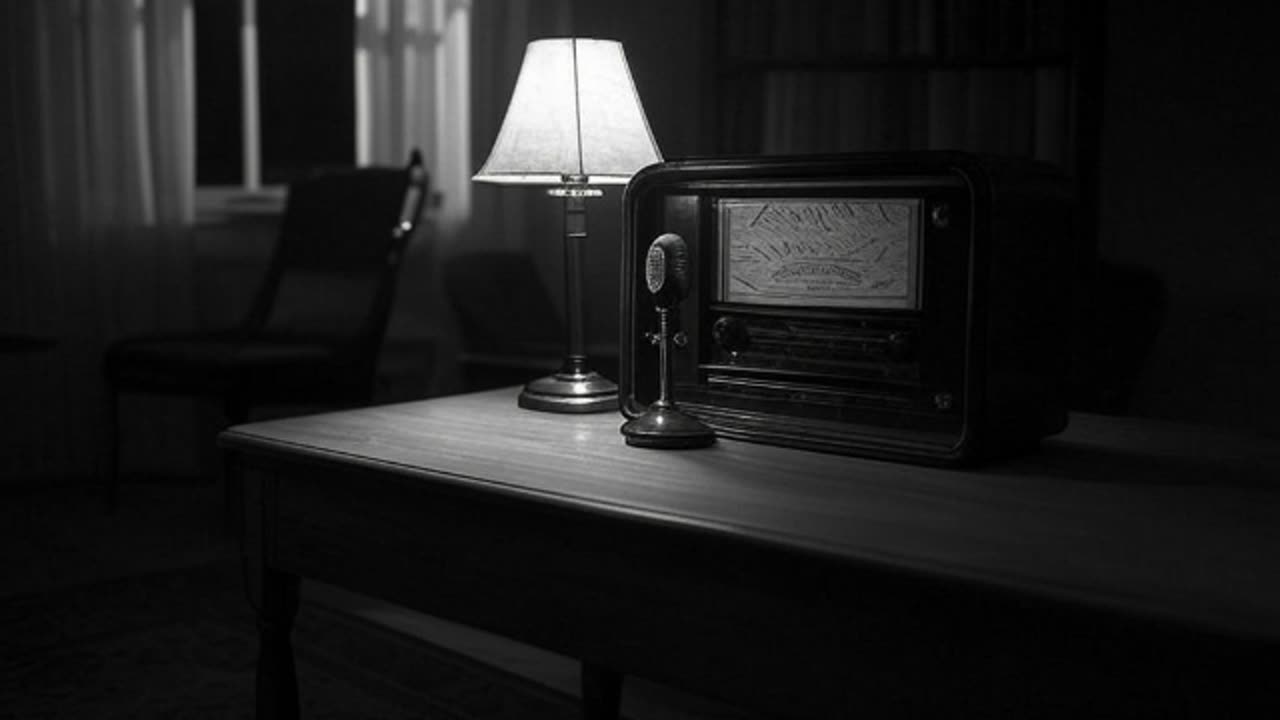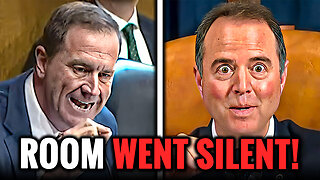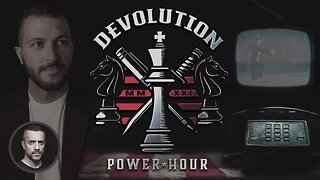Premium Only Content

Lights Out: Mungahra (October 27, 1942)
Setting: A contemporary (1942) American city, likely urban, with scenes in a collector’s home, a museum, and possibly a ritualistic or supernatural space. The episode uses sound effects like eerie chants, creaking doors, demonic roars, and shattering glass to create a terrifying, occult atmosphere, emphasizing the horror of an ancient curse.
Plot:
Introduction: The episode opens with the Lights Out theme, a dissonant orchestral score, followed by Arch Oboler’s commanding voice: “Lights out, everybody!” accompanied by a crashing sound effect. The narrator introduces “Mungahra,” a tale of a cursed statuette and its demonic influence, setting a grim tone for wartime listeners.
The Premise: The story centers on a collector or archaeologist, possibly named Dr. Ellis or a similar figure, who acquires a rare statuette called “Mungahra,” an ancient idol from an unspecified culture (likely inspired by Lovecraftian or Polynesian motifs). The statuette, imbued with a malevolent force, brings misfortune to those who possess it. The collector, unaware of its curse, displays it proudly, but strange events—unexplained noises, visions, or accidents—prompt fear. A colleague, perhaps a skeptical friend or assistant, and a female character, possibly the collector’s wife or daughter, become entangled in the escalating horror.
Escalating Horror: The statuette’s influence grows, manifesting as a demonic entity or possessing one of the characters, turning them into a vessel for “Mungahra’s” will. Oboler’s script likely employs stream-of-consciousness narration to convey the collector’s descent into paranoia or madness, with dialogue revealing the idol’s history—perhaps tied to a forgotten cult or sacrificial rites. Key scenes include a nighttime confrontation with the statuette’s glowing eyes, a ritual gone wrong, or a possessed character speaking in an unearthly voice, marked by sound effects like guttural roars, chanting, or shattering objects. The tension builds as the characters attempt to destroy or return the idol, only to face its wrath, with the female character possibly becoming a victim or key to breaking the curse.
Climax and Resolution: The climax likely involves a desperate struggle to banish Mungahra’s power, perhaps through a counter-ritual or sacrifice. The collector might confront the demon directly, only to be consumed by its malevolence, or succeed at great cost, such as losing their sanity or life. Oboler’s endings often lean grim, so the statuette might survive, passed to another unwitting soul, with sound effects of a final roar or eerie silence. The episode closes with Oboler’s voice reflecting on the dangers of tampering with the unknown, urging listeners to tune in next week, leaving a haunting aftertaste. The 23-minute runtime maintains a tight, relentless pace.
Themes: The perils of hubris in exploring forbidden knowledge, the terror of ancient curses, and the destructive power of greed or obsession. The episode reflects Oboler’s wartime critique of human arrogance, with “Mungahra” as a metaphor for unleashed evil, akin to Axis powers.
Cast and Roles:
Collector (Dr. Ellis or Similar): Played by an unnamed actor, likely a Chicago radio veteran, voicing an arrogant or curious scholar with a mix of confidence and growing dread, shifting to panic as Mungahra’s curse takes hold.
Female Character (Wife/Daughter): Played by an unnamed actress, portraying a supportive but terrified figure, voiced with emotional depth, possibly screaming or pleading during the demonic climax.
Colleague/Assistant: Played by an unnamed actor, voicing a skeptical or loyal ally, with a rational tone that cracks under supernatural pressure.
Mungahra (Demon): Unvoiced or minimally voiced (possibly by an actor with a distorted, guttural delivery), its presence conveyed through sound effects like roars, chants, or whispers, evoking terror through audio alone.
Announcer/Narrator: Arch Oboler, delivering the opening and closing remarks with his signature ominous tone, framing the story’s horror and moral warning.
Note on Cast: Lights Out relied on Chicago’s skilled radio actors, with no specific credits for this episode. Performances were intense, matching Oboler’s visceral style, with the small cast ensuring a focused, dialogue-driven narrative.
Production Details:
Music: A dissonant orchestral score, likely composed by NBC’s in-house musicians, opens and closes the episode, with eerie stings accentuating suspenseful moments, enhancing the occult atmosphere.
Writer/Director: Arch Oboler, crafting a tale blending Lovecraftian horror with wartime moral commentary, drawing on his knack for supernatural dread and cursed artifacts.
Sound Effects: Critical to the episode, including eerie chants, creaking doors, demonic roars, shattering glass, and footsteps, creating a vivid, terrifying soundscape. Mungahra’s presence might be marked by distorted whispers or a sudden crash.
Sponsor: Unsponsored during its 1942 NBC revival, Lights Out aired Tuesday nights, supported by the network’s commitment to horror programming, allowing Oboler’s bold vision.
Source Note: Details are inferred from archive.org, oldtimeradiodownloads.com, and tangentonline.com, with no surviving script but a preserved recording available. The episode’s runtime is approximately 23 minutes, per tangentonline.com.
World and National Events Around October 27, 1942:
To provide context for the broadcast, here are key world and national events occurring in late October 1942, reflecting the wartime climate that shaped listeners’ perspectives:
World Events:
World War II – European Theater: The Second Battle of El Alamein (October 23–November 11, 1942) began, with Allied forces under Montgomery launching a major offensive against Rommel’s Axis troops in North Africa. Radio news celebrated this turning point, boosting morale, resonating with the episode’s theme of confronting evil.
Pacific Theater: The Guadalcanal Campaign (August 1942–February 1943) intensified, with the Battle of the Santa Cruz Islands (October 25–27) seeing heavy U.S. naval losses but strategic gains. Radio updates emphasized the Pacific’s grueling stakes, paralleling the episode’s relentless horror.
Holocaust Escalation: Nazi deportations to death camps like Auschwitz and Treblinka peaked, with limited U.S. awareness via radio and newspapers. Oboler’s anti-Nazi stance, noted in tangentonline.com, infused the episode with moral urgency against malevolent forces.
Soviet Front: The Battle of Stalingrad (August 1942–February 1943) raged, with Soviet resistance gaining ground. Radio reports highlighted Allied unity, echoing the episode’s call to face monstrous threats.
National Events:
War Mobilization: The U.S. war effort was at its peak, with rationing of gas, sugar, rubber, and coffee enforced. War bond drives, heavily promoted on radio, urged civilian sacrifice, reflecting the episode’s critique of selfish ambition.
Japanese American Incarceration: Over 100,000 Japanese Americans remained interned in camps like Manzanar under Executive Order 9066 (February 1942). Radio debates on the policy fueled wartime tensions, paralleling the episode’s theme of unseen dangers.
Entertainment and Morale: Hollywood and radio boosted morale, with films like Casablanca (premiered November 1942) and radio shows like The Bob Hope Show mixing humor with patriotism. Lights Out’s horror offered a stark contrast, channeling wartime fears into supernatural dread.
Sports and Culture: The 1942 baseball season ended with the St. Louis Cardinals’ World Series win (October 5). Bing Crosby’s “White Christmas” (released 1942) became a wartime anthem, covered on radio, reflecting a yearning for peace.
-
 3:53
3:53
NAG Daily
20 hours agoRUMBLE RUNDOWN: DREAM HACK SPECIAL W/Greenman Reports
9555 -
 1:28
1:28
Damon Imani
1 day agoThey Laughed at Trump’s Cognitive Test — Damon Made Them REGRET It!
1.79K6 -
 9:14
9:14
Freedom Frontline
22 hours agoAdam Schiff PANICS As Eric Schmitt Exposes His Dirty Lies LIVE
9504 -
 10:32
10:32
GBGunsRumble
1 day agoGBGuns Armory Ep 153 Adler Arms AD-9`
1.4K1 -
 35:53
35:53
Degenerate Plays
2 hours agoRuckus Randy And Repair Ronald (Socks On) - Call of Duty: Modern Warfare 2 (2009) : Part 7
7091 -
 38:35
38:35
Stephen Gardner
22 hours ago🔥What JUST leaked out of Congress. PROVES Trump RIGHT!!
91.7K120 -
 LIVE
LIVE
Total Horse Channel
14 hours ago2025 IRCHA Derby & Horse Show - November 2nd
73 watching -
 1:59:42
1:59:42
Game On!
20 hours ago $44.05 earnedNFL Week 9 Wise Guy Roundtable BEST BETS!
143K15 -
 2:18:53
2:18:53
Badlands Media
22 hours agoDevolution Power Hour Ep. 403: Brennan Exposed & The Intel War w/ Thomas Speciale
462K135 -
 4:34
4:34
Legal Money Moves
5 days agoThe AI Panic: Are You Next?
51.8K10